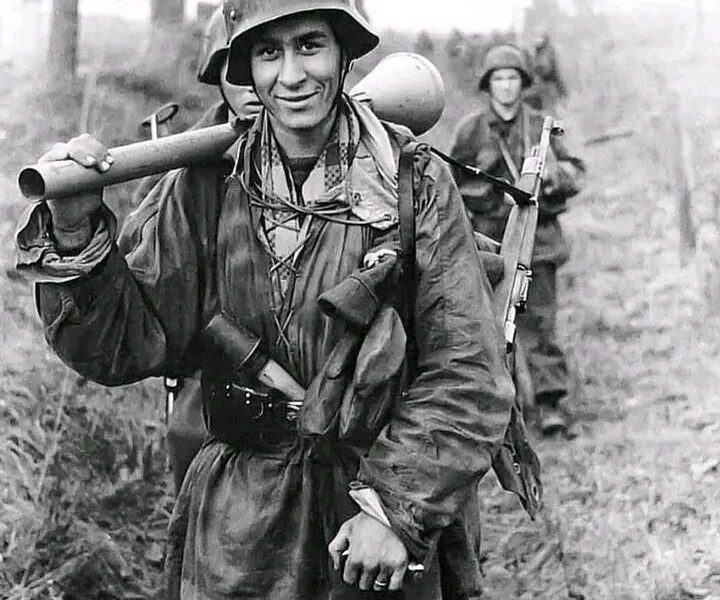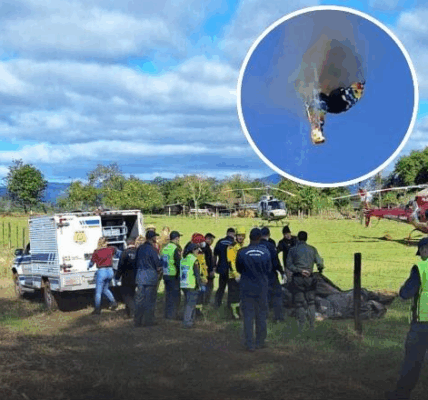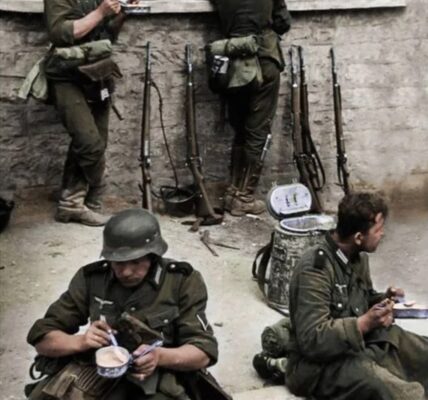War—this word carries with it heaviness, fear, and destruction. But sometimes, very rarely, there are images that briefly break through all of this. This photo is one of them. It shows a young German soldier on the Eastern Front in 1944. He is smiling. At first glance, this smile may seem out of place. What is a smile doing in the horror of World War II?

The soldier in the picture is wearing the typical uniform of the late war years: a simple tunic, his steel helmet pulled low over his forehead, a Panzerfaust casually slung over his shoulder. Around him: blurry figures – his comrades. The ground is muddy, the sky gray. And yet his face stands out, that honest, almost mischievous smile. It is a moment of humanity amidst the inhuman.

Who was this young man? A simple soldier from Bavaria? A volunteer who still believed in the “final victory”? Or a war-scarred veteran who knew it would soon be over—either the war or his own life? We will probably never know. His name is lost in the turmoil of history, but his face remains.

1944 was a decisive year on the Eastern Front. The Wehrmacht was in retreat, and the Red Army was advancing inexorably. Many German soldiers were no longer fighting out of conviction, but rather for sheer survival. During this period, the so-called “Volkssturm” militia was introduced—a desperate measure that sent even children and old men to the front. The young man in the picture, however, still seems full of life—almost as if he wanted to laugh in the face of death one last time.

What goes through the mind of a person who smiles in such a moment? Is it gallows humor? Rebellion against the inevitable? Or simply a brief glimmer of youth that even war couldn’t completely destroy? Perhaps in that moment he was thinking of home, of his family, of better times. Perhaps it was just the brief joy of being photographed—a touch of normality in the utter chaos.
This photo reminds us that behind every uniform lies a person. A person with thoughts, hopes, and fears. History often tends to reduce soldiers to numbers—5 million here, 20 million there. But each of those numbers was a life. A son, a brother, a friend. Including this young man.
The question that arises: Is this smile a sign of strength or of madness? To still be able to smile in the midst of cold, hunger, death, and constant fear – that requires a form of inner strength we can hardly comprehend today. And yet he smiles. Perhaps it is also an attempt to give himself courage. A moment of self-assertion.
Today we look at this photo 80 years later. The world has changed. Germany is a different country, its history has been dealt with, and yet images like this cast long shadows. They remind us that history isn’t just about dates, treaties, and grand speeches—it’s about people. About moments. About quiet stories like this one.
Perhaps that’s precisely where the power of this photo lies. It doesn’t scream, it doesn’t accuse. It simply shows a face—a young, vibrant face, in the midst of the downfall of an empire. And that face is smiling.




